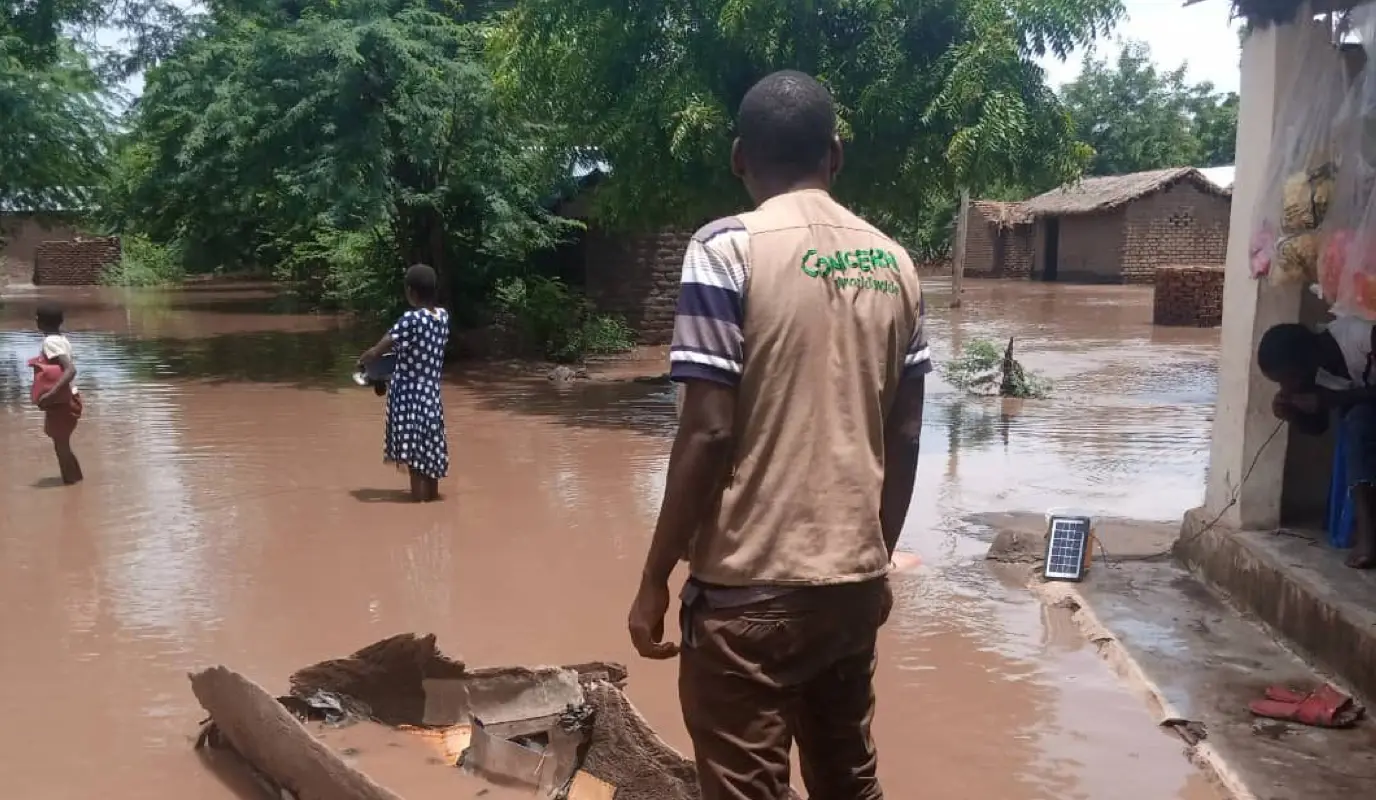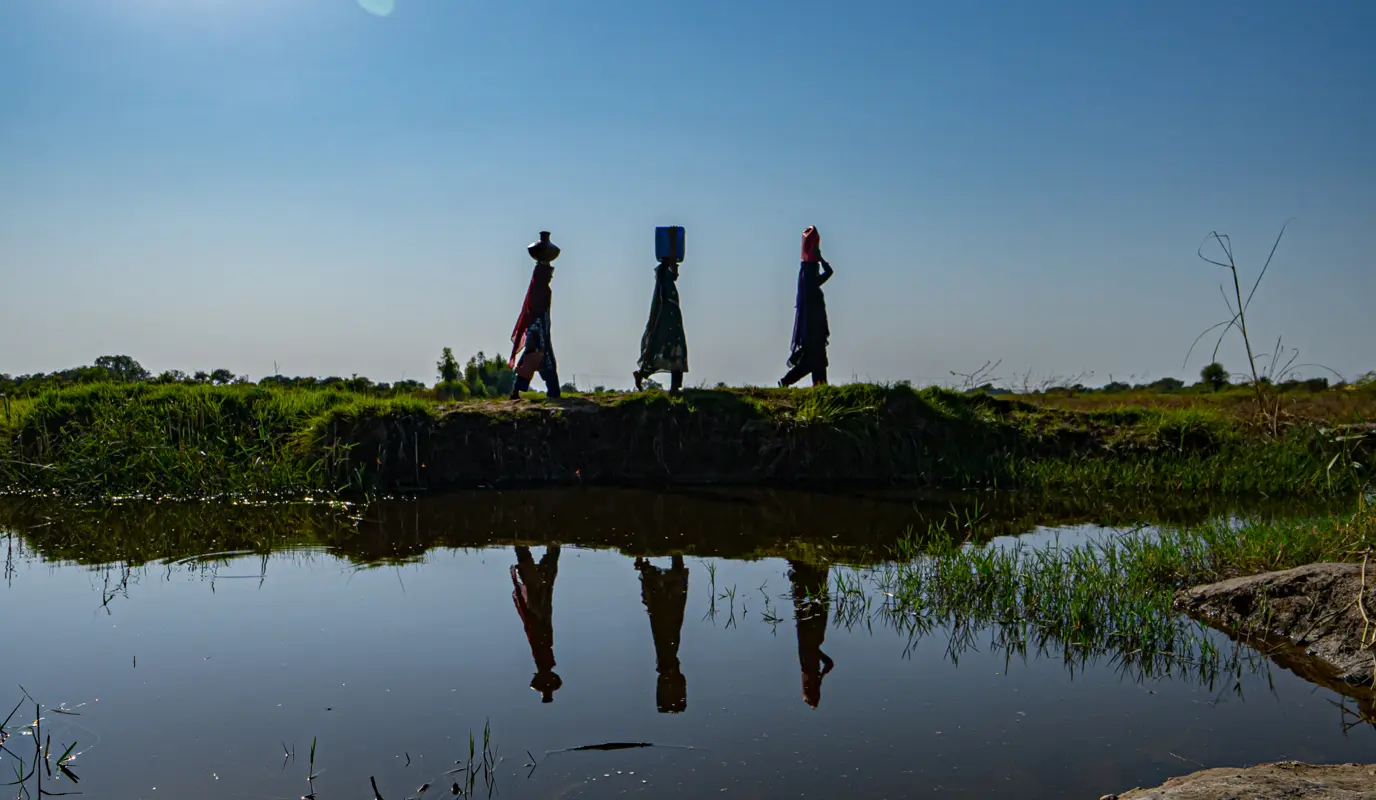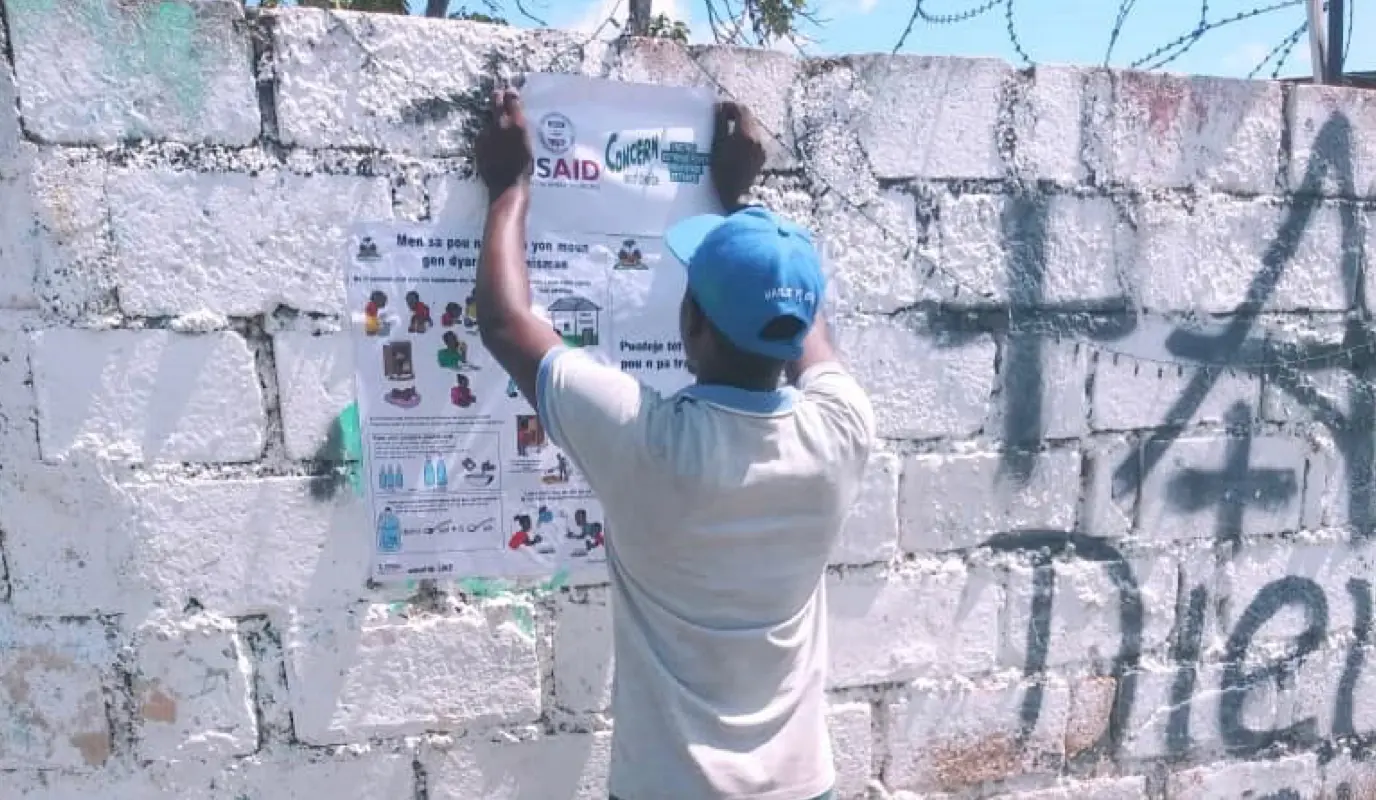News
The Horn of Africa crisis, explained
You may have heard about catastrophic droughts across Ethiopia, Kenya, and Somalia — here’s what it really means.
Read MoreTen of the most impactful humanitarian events of 2022, and how Concern has been responding — thanks to your support.
In 2023, we anticipate that one person in every 23 will require some form of humanitarian assistance — a total of 339 million people around the world.
Much of this need stems from events that have taken place over the last several decades. Nevertheless, 2022 was a devastating year for the most vulnerable communities around the world — with a 24% increase in humanitarian need. Here’s a look back at ten of the humanitarian events of 2022, including how Concern — thanks to your support — has been responding.
For years, Ethiopia, Kenya, and Somalia have faced the threat of a humanitarian emergency due to years of little to no rain. Following this year’s failed rainy seasons, that emergency has been pushed to a breaking point with the region’s worst drought in over 40 years.
As of December 2022, approximately 36.4 million people have been affected—including 24.1 million in Ethiopia, 7.8 million in Somalia, and 4.5 million in Kenya. At least 23 million people are facing hunger, and two districts in Somalia are at risk for famine, and even if this is not declared in the region, the UN estimates that, given the large number of people affected and the likely duration of the crisis, excess mortality during this drought could be as high as in 2011 when 260,000 people died.
“There is widespread acute malnutrition and this will continue increasing as we approach January to March 2023 — the driest months of the year,” says Amina Abdulla, Concern’s Regional Director for the Horn of Africa.
Abdulla believes the best case scenario for the Horn of Africa would be if the April-June rains in 2023 were good (although early forecasts don’t support this outcome). This would help replenish water tables and allow people to return to their farms to plant crops. However, it wouldn’t be until the last four or five months of 2023 that these crops would be ready for harvest, meaning that both increased financial support for the region and a longer-term approach to help its residents become financially independent and meet their needs without humanitarian assistance are required.
At the beginning of 2022, Tropical Storm Ana hit many of the countries still recovering from the destruction of 2019’s catastrophic Cyclone Idai — including Madagascar, Malawi, and Mozambique. Fortunately, the impact of Ana was approximately one-tenth that of Idai, however for the most vulnerable families in the region with the fewest resources, this still presented a tremendous setback. In Malawi, more than 70,000 people were displaced at the height of the storm. Many lost their homes.
“The high winds ripped roofs off homes and blew down walls,” says Concern Malawi’s Country Director, Yousaf Jogezai. “In other cases structures collapsed as a result of the heavy rainfall.”
Concern reacted swiftly to Tropical Storm Ana in Malawi, launching an emergency response to support 400,000 people with immediate needs like plastic sheeting and other essential household items, as well as longer-term support to address crop losses.

We can’t talk about the humanitarian events of 2022 without mentioning the ongoing conflict and resulting humanitarian crisis in Ukraine. On February 24, 2022, a long-simmering crisis in Ukraine escalated into violence with devastating impact. By mid-March, it became the site of one of the world’s largest refugee crises, with 7.9 million Ukrainians displaced abroad as refugees, and an additional 6.5 million displaced internally.
As this renewed conflict approaches the one-year mark in February, it’s also entering what Concern’s Head of Emergency Operations, Ros O’Sullivan, describes as a “more stark” situation with winter conditions and both electricity and fuel shortages. “Temperatures at night are falling to minus 4 or 6 degrees, and they will reach minus 20 by the middle of winter,” says O’Sullivan.
Concern began responding immediately to the crisis in Ukraine, and is partnered with German NGO Welthungerhilfe and Italian organization Cesvi to operate a joint emergency response from Poltava and Kirovohrad in the center of the country, bringing supplies and cash to communities in the eastern and southern regions (both of which are host to large numbers of displaced Ukrainians). Concern is also supporting some of the 4,000 special winter centers announced by the government this month to provide heat, warmth, food, and charging points in areas where the electricity supply has been impacted.
2022 began with the continuation of catastrophic flooding in South Sudan, which began in the late autumn of 2021 and continued into the new year. In December of that year, Concern South Sudan Country Director Shumon Sengupta said: “There has not been flooding on this scale in the region since 1962.”
Today, South Sudan is facing its fourth consecutive year of floods, as well as what Boris Cheshirkov of the United States High Commissioner of Refugees describes as “the threat of worse to come as the climate crisis accelerates.” While over one-quarter of the population of Unity State were affected by flooding in 2021, that number has more than doubled in 2022.
South Sudan isn’t the only country facing record-breaking floods. Earlier this summer, Bangladesh was hit by some of the worst flooding in years. Over 3.5 million people were stranded due to the waters, which submerged as much as 90% of districts in the country’s northeast. About a month after the beginning of the floods in Bangladesh, Pakistan was likewise inundated with heavy rains that, in June alone, reached 67% above normal levels. By late August, rainfall in the country was nearly triple the country’s national average over the last 30 years and left one-third of the country underwater.

“It is difficult to put into words the scale and enormity of this destruction that our teams are witnessing, but it is extremely critical that these communities get our help,” says Lucia Ennis, Concern's Regional Director for Asia, of the events in Pakistan (which also hit at a time of high inflation and economic crisis for the country). Concern responded in all three countries with both short-term necessities as well as longer-term needs.
In Pakistan, one of our long-term projects was also put to the test: In a response to the difficulty of funding emergency response programmes in the country, RAPID (Responding to Pakistan’s Internally Displaced) was developed in 2009 to assist the most vulnerable people in the aftermath of any natural or man-made disaster in Pakistan. With an established network of organizations, the programme allows for funds to get where they need to go most, often in as little as two days.
On June 22, 2022, a 5.9-magnitude earthquake hit southeastern Afghanistan, killing over 1,100 people. As of this writing, it’s on record as the deadliest earthquake of the year and the deadliest in Afghanistan since 1998. The earthquake’s destruction — which also included over 10,000 homes — was explained in part by the homes and shelters in this area being built with poor-quality materials.
Concern (which has been in Afghanistan since our initial response to the 1998 earthquake), reached the impact zone just over a week after the quake. Our first-response team (comprising programme, logistics and monitoring, evaluation, accountability and learning staff) immediately began coordinating with associates, including OCHA, other UN agencies, partner organizations, and members of the de facto government, to assist survivors.
Beyond providing emergency shelter to families in immediate need, we also focused on preparing for winter. Cold temperatures are often one of the biggest challenges in Afghanistan over the winter months. The country is full of mountain ranges, with much of the population living in their foothills or in the valleys below them, and winters there are extremely harsh. It was essential to act in June and July to ensure that the districts affected by the earthquake were not highly exposed to these elements.

In addition to the effects of climate change in South Sudan, the youngest country’s hopes for peace were under renewed threat this year. On 4 August, parties to the 2018 Revitalized Peace Agreement for South Sudan agreed to an additional two-year extension for transitional governance arrangements. This also postponed elections until late 2024.
This added uncertainty has given way to renewed violence in the country, the net effects of which come to bear hardest on displaced civilians. In September, Yasmin Sooka, Chairperson of the UN Commission on Human Rights in South Sudan said: “Without these steps, we are likely to see millions more South Sudanese displaced or crossing borders, creating havoc for neighboring countries and aid agencies.”
On August 25, 2017, an outbreak of violence in Myanmar’s Rakhine State forced hundreds of thousands of Rohingya people to flee their homes. Five years later, over 1 million stateless Rohingya remain in temporary shelters away from home. Over 925,000 (more than half of whom are children) have spent the last half-decade on a narrow strip of hilly land below the Bangladeshi city of Cox’s Bazar.
This isn’t an anniversary to celebrate, especially as the plight of the Rohingya — despite being one of the largest refugee crises today — has remained largely absent from headlines since the initial attacks in 2017.
Concern is one of over 100 non-governmental organizations — both local and international — responding to the influx of Rohingya refugees in Bangladesh. Because we have been in Bangladesh for 50 years, had former staff members in the area, and had worked on previous projects there (including with Rohingya refugees as early as 1991), we were one of the first organizations to respond to the crisis.
Since then, we’ve maintained a combination of life-saving integrated nutrition support, livelihood development, disaster risk reduction, non-food item distributions, and home gardening initiatives. Our goal, along with many of our partners and humanitarian colleagues, is to help the Rohingya stay healthy, care for their families, and live with as much security and dignity as possible. Two of the biggest focuses within this are maintaining nutrition and safeguarding against monsoons, cyclones, and other weather-related disasters, and responding to the threats posed by COVID-19.

In the last three years, Haiti has faced lockdowns, fuel shortages, violence, a deadly earthquake, and even the assassination of its president. In 2022, that crisis has continued to deepen — and gone largely unnoticed.
Over the course of 2022, gang warfare in the capital Port-au-Prince has spiraled ferociously. Cité Soleil, a sprawling impoverished commune of Port-au-Prince, is at the center of this eruption of violence. The most recent wave of conflict in July this year resulted in widespread death, rapes, property damage, communities fleeing violence, and disruption of food, water, and fuel supplies.
It’s also contributed to new record highs in hunger in the country. In the autumn of 2022, it was announced that nearly half of the population of Haiti faces acute food insecurity. This is the fifth highest per-capita figure in the world. The number of people on this Caribbean island projected to fall into IPC 4 — the category of hunger one step removed from famine — is 1.8 million. That’s more than Kenya and not far off the figure for Somalia.
Haiti is currently one of several countries facing a severe wave of cholera cases (more on this below), with nearly 1,200 confirmed cases. Said Kwanli Kladstrup, Country Director with Concern Haiti:
“Haiti is contending with multiple concurrent shocks. Economic deprivation, social and political instability, and violent conflict negatively impacts the everyday lives of people living in the metropolitan area of the capital, Port-au-Prince. The cholera outbreak adding to this myriad of issues, has aggravated the existing humanitarian crisis in Haiti, causing further stress to people’s lives. Prevention and the knowledge on how to stop cholera spreading is essential to keeping the numbers of cases down.”
Displacement, conflict, and climate change have led to another pandemic escalating in 2022: cholera. The bacterial illness — which causes severe diarrhea, vomiting, and dehydration — can be contracted through contaminated food or water; conditions which have proliferated in recent years.
In Haiti, blockades in Port-au-Prince have halted most transport — in turn creating shortages of basic goods and services like clean water and healthcare. However, it’s not the only country facing high case numbers. Syria and Lebanon are facing the first outbreak in over a decade, with over 52,000 cases reported across all 14 of Syria’s governorates and over 5,100 cases across 20 out of Lebanon’s 26 districts. Many of these cases are hitting refugee communities as well as informal settlements for internally-displaced people, many of whom are women and children. Further outbreaks have been reported in flood-affected regions, such as Pakistan’s Sindh province and parts of Malawi.

Cholera is easily prevented through vaccination. However, demand for these has become so high in 2022 that the World Health Organisation resorted to suspending its two-dose recommendation in order to help supplies reach more people.
We’ll close with some good news from 2022: Delegates to this November’s UN Framework Convention on Climate Change Conference (COP27) agreed to establish a “historic loss and damage fund” to account for the losses faced (particularly by most affected peoples and areas) in the wake of climate-change–related disasters. This represents an historic step towards climate justice from high-income countries, supporting countries most affected by climate change — countries that often have the lowest greenhouse gas emissions.
“This is a first step and a landmark decision that the countries most vulnerable to climate change have been pushing for, for many years,” said Concern’s Advocacy Manager Sally Tyldesley. However, it also signals a great deal of work ahead for 2023:
“It will now need to be operationalized. Crucially, decisions need to be made on where funding will come from. It’s important that this is new funding, otherwise, we run the risk of double counting by governments between different announcements and commitments.”